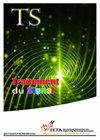植物病害分类的胶囊关注网络
IF 1
4区 计算机科学
Q4 COMPUTER SCIENCE, ARTIFICIAL INTELLIGENCE
引用次数: 0
摘要
植物病害的识别是农业中最重要和最困难的问题之一,需要更明亮的解决方案。随着人工智能(AI)的兴起,机器学习(ML)和深度学习(DL)算法帮助农民以高度的智能精度识别和分类植物特征。然而,准确的植物病害分类对于农民增加种植和增加产量至关重要。因此,本研究提出了一种独特的注意力、胶囊和前馈分类层的组合,以达到植物病害的最大分类精度。该系统使用用户自定义的卷积迁移学习网络(CTLN)提取特征,注意网络排除不必要的特征,只突出关键特征进行分类。最后,将选择的特征发送到前馈胶囊网络以提高性能。本文提出了一种克服现有深度学习网络约束的范式,并大大降低了计算负担。利用植物村数据库包含超过5万张健康和患病植物的照片,对建议的网络进行了全面评估。对所提方法的性能指标进行了评估,并与其他学习网络进行了比较。与以往模型相比,实验结果表明,该模型的准确率达到99.8%,为新的分类方法提供了支持,有利于农民的福祉。本文章由计算机程序翻译,如有差异,请以英文原文为准。
A Capsule Attention Network for Plant Disease Classification
The identification of plant diseases is one of the most essential and difficult concerns in agriculture, necessitating solutions with a brighter light. With the onset of artificial intelligence (AI), machine learning (ML) and deep learning (DL) algorithms have aided farmers in identifying and classifying plant features with a high degree of intellectual precision. However, accurate disease classification in plants is essential for empowering farmers to cultivate more and produce more. This study therefore presents a unique assembly of attention, capsule, and feedforward classification layers for reaching the maximum classification accuracy for plant diseases. The proposed system uses user-defined customized Convolutional Transfer Learning networks (CTLN) to extract features and the attention networks exclude unnecessary features and highlight only critical features for classification. Finally, the selected characteristics are sent to the Feedforward Capsule networks to improve performance. This paper proposes a paradigm that overcomes the constraints of existing deep learning networks and drastically decreases the computing burden. The suggested network is thoroughly evaluated utilizing Plant Village databases containing over 50,000 photos of healthy and diseased plants. The performance metrics of the proposed method are evaluated and compared to those of other learning networks. Compared to previous models, experimental results indicate that the proposed model has a 99.8 percent accuracy rate, lending support to the new categorization method that benefits farmer well-being.
求助全文
通过发布文献求助,成功后即可免费获取论文全文。
去求助
来源期刊

Traitement Du Signal
工程技术-工程:电子与电气
自引率
21.10%
发文量
162
审稿时长
>12 weeks
期刊介绍:
The TS provides rapid dissemination of original research in the field of signal processing, imaging and visioning. Since its founding in 1984, the journal has published articles that present original research results of a fundamental, methodological or applied nature. The editorial board welcomes articles on the latest and most promising results of academic research, including both theoretical results and case studies.
The TS welcomes original research papers, technical notes and review articles on various disciplines, including but not limited to:
Signal processing
Imaging
Visioning
Control
Filtering
Compression
Data transmission
Noise reduction
Deconvolution
Prediction
Identification
Classification.
 求助内容:
求助内容: 应助结果提醒方式:
应助结果提醒方式:


